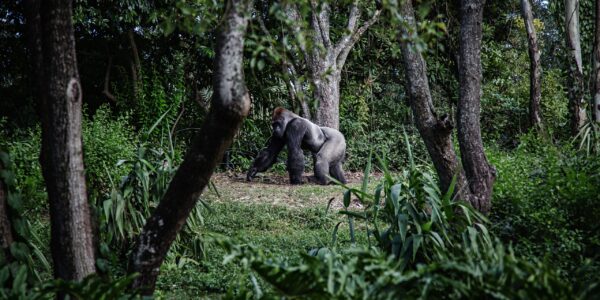We know a lot less about the microbiome of the animals around us than our own microbiomes. We already have a good understanding of how the microbiome is related to human health. Research into the animal microbiome and how it affects health status is still in its infancy. However, knowledge of the microbiome is useful for many areas related to animal health.
The microbiome of animals is instrumental for good health. The microbiome affects how well animals can obtain nutrients from their food. Improved food uptake lowers costs for livestock producers and helps reduce environmental emissions. The microbiome can also influence the quality of the food produced from livestock. Genomic technologies can assist in managing the microbiome of animals by predicting food conversion and health status, scanning for potential pathogens, and identifying antibiotic resistance genes in the animal gut. Read on to discover about the latest research directions in different animal species.
PETS AND HORSES
Using probiotics in the diet of horses, cats, dogs and other companion animals is focused on preventing disease or gastrointestinal ailments. As humans live in close contact with pets, another concern with the gut microbiome is the transfer of pathogens from pets to animals. Knowledge of the microbiome of companion animals can therefore affect animal health, and the health of their owners.
Horses are herbivores, thus their microbiome is crucial in enabling them to extract nutrients from poorly digestible forage. When the gut microbiome is out of balance, this can have profound effects on horses’ health across many different domains. The equine microbiome can be broadly separated into two sections, the upper gut (including the stomach, jejunum and ileum), and lower gut (the caecum and colon). The microbiome in the upper gut is highly variable due to bacteria introduced from plant matter, while the lower gut microbiome composition is more stable.

The microbiome of horses appears to be quite fragile, and stressors such as abrupt dietary changes, transport, exercise and the use of antibiotics both modify the dominant microbes present in the equine gut and place the animal at risk of conditions such as colitis and colic. Research into the microbiome has shown that modifying the diet can produce certain fairly predictable changes to the microbes present in the equine gut. This potentially allows for the development of specialised diets designed to prevent undesirable changes to horses’ microbiome arising from competition, horse shows or illness.
Dogs and cats are different species, but their gastrointestinal tracts are broadly similar and they are both carnivores, therefore there are similarities in their gut microbiomes. The canine and feline microbiome is associated with both acute and chronic gastrointestinal disease, as well as metabolic diseases such as obesity. Furthermore, the close interaction between companion animals and their owners means that horizontal transfer of microbes occurs. This means that pet owners generally have a greater microbiome diversity than people without pets, however there is also the possibility that pathogenic bacteria can be transferred to humans. It seems that the pet microbiome affects not only the health of pets but also their owners.
Diarrhoeal episodes in pets leads to lethargy, dehydration and anorexia, reducing quality of life for pets and increasing veterinary costs. Acute episodes of diarrhoea in cats and dogs causes certain characteristic changes in the gut microbiome. Both cats and dogs experiencing diarrhoea undergo a decrease in commensal bacteria such as Roseburia and Faecalibacterium, while Clostridia (a broad class of bacteria containing both beneficial and pathogenic bacteria) increase. In addition, changes to the gut microbiome in cats and dogs caused by antibiotics can lead to diarrhoea. These changes to the pet microbiome are also associated with functional changes such as a decrease in the concentration of short-chain fatty acids in faeces and changes in the immune system. It’s plausible that a prebiotic, probiotic or their combination could be used to return the feline or canine gut microbiome to an equilibrium, but more clinical research is needed.
RUMINANTS

Ruminants such as cows, sheep goats and deer are named for the rumen, the first and largest stomach, and primary fermentation “tank” for these animals. The rumen microbiome is incredibly diverse and complex, with a high number of different microbes including protozoa, bacteria, fungi and archaea. The rumen affects namely feed conversion and emissions, and can also influence the health of the animal. Genomic techniques have been instrumental in the first steps towards unravelling the complexity of the rumen.
Ruminants on a grass-based diet are dependent on the ability of the rumen microbiome to break down the cellulose in this relatively nutrient-poor feed to short chain fatty acids, the primary source of energy for the grazer. Certain bacteria, such as some Fibrobacter and Ruminococcus species, are considered to be desirable due to higher ability to digest cellulose and increasing their activity should result in better ruminant performance. However, it has been difficult to actually improve yields by feeding microbes shown to be efficient cellulose converters. Competition with other microbes is thought to be the reason behind poor establishment of probiotics in ruminants.
On the other hand, some techniques to modify the ruminant microbiome have proven to be useful for animal health. For example, it is possible to avoid intestinal problems that arise from switching a grass-fed animal to a grain diet by inoculating with rumen fluid from a grain-fed animal. Anti-nutritive factors from some pasture animals can also be broken down by inoculating with bacterial strains that have been developed for this task, thus assisting in keeping ruminants healthy. Commensal microbes are essential in normal immune function of ruminants: they stimulate intestinal cells to maintain their barrier function and can block the attachment of pathogens to the gut. Microbiome modulation could strengthen these functions.
AQUACULTURE

In the aquaculture industry, fish are traditionally kept in high densities in a medium that facilitates the transfer of microbes. The microbiome is seen as an integral part of keeping fish raised for food healthy and productive. Maintaining a healthy microbiome in fish is particularly important for closed recirculating agriculture systems, however open systems in which there is potential transfer of microbes between captive and wild populations, and waste from kept fish must be managed also benefit from managing the fish microbiome.
The link between the gut microbiome and immunity has been well established in fish. A diverse microbiome is beneficial to prevent infection by pathogens for several reasons. Lactobacillus and Bacillus are both used as probiotics in aquaculture because they improve the fish gut barrier function and the germ-fighting abilities of the fish immune system. Antibiotics are used in aquaculture to control pathogens, however they can have profound and long-lasting effects on the fish microbiome that leads to a decrease in productivity. By measuring gut microbiome changes, the effects of interventions on the microbiome after the use of antibiotics can be tracked.

MONOGASTRICS
The gut microbiome is important for gastrointestinal health, immune function and digestion in swine and poultry. Around 70% of the immune cells in swine and poultry are found in the gastrointestinal tract, highlighting the importance of the gut for overall health. The European ban on antibiotic growth promotors in the animal industry has stimulated interest in the gut microbiome of animals, particularly swine and poultry. In addition to animal health, the gut microbiome also influences productivity and microbiological safety.
The gut microbiome in both poultry and pigs converts fibre from the diet into short chain fatty acids, which are important in maintaining gut barrier function. By identifying microbes that perform this conversion, the opportunity to modify the feed or environment of these animals to improve their immune function arises. A highly diverse microbiome is also seen as beneficial in high-productivity environment seen the swine and poultry industries. Microbial diversity is better able to respond to changes in environments and prevent the establishment of pathogens.
ANIMAL MICROBIOME CHALLENGES AND FUTURE DIRECTIONS
A major challenge in analysing the microbiome is obtaining representative samples at critical points in the gastrointestinal tract. Faecal samples do not reflect the microbial composition the entire gastrointestinal tract, which varies along its length. Smaller animals such as fish and chickens must be sacrificed to obtain a sample from the upper gut, whilst in larger animals surgical cannulation or a stomach tube are potentially feasible yet invasive techniques to obtain samples from the stomach, rumen or small intestine to analyse its microbiome. The development of non-invasive techniques would be beneficial to enhance understanding of the animal microbiome.
Currently, the bulk of research into the microbiome has focused on bacteria. However, we know that the microbiota also includes fungi, protozoa, archaea and viruses, and these all affect the metabolic functions of the gut microbiome and its composition. For example, the cellulose-degrading actions of fungi may be more important than bacteria in breaking down the cell walls in forage material than bacteria. Historically, these microbes are difficult to culture in the laboratory than bacteria, hence difficulties in researching them. Modern genomic techniques have brought some light to this unknown area of the microbiome.
Experts Meeting on Microbiome & Animal Health and Performance
BaseClear regularly organises expert meetings on Microbiome & Animal Health and Performance, Industry experts from companies such as DSM Animal Nutrition & Health, BaseClear, Olmix, Alltech, Phileo by Lesaffre and Biomin discuss animal microbiome studies and regulatory aspects of feed additives.
BaseClear Expert Meetings
REFERENCES
- Alessandri G, Argentini C, Milani C, Turroni F, Cristina Ossiprandi M, van Sinderen D, Ventura M. Catching a glimpse of the bacterial gut community of companion animals: a canine and feline perspective. Microbial Biotechnology 2020;13(6):1708-32. doi: 10.1111/1751-7915.13656.
- Jha R, Fouhse JM, Tiwari UP, Li L, Willing BP. Dietary Fiber and Intestinal Health of Monogastric Animals. Frontiers in Veterinary Science 2019;6(48). doi: 10.3389/fvets.2019.00048.
- Kauter A, Epping L, Semmler T, Antao E-M, Kannapin D, Stoeckle SD, Gehlen H, Lübke-Becker A, Günther S, Wieler LH, et al. The gut microbiome of horses: current research on equine enteral microbiota and future perspectives. Animal Microbiome 2019;1(1):14. doi: 10.1186/s42523-019-0013-3.
- Knecht D, Cholewinska P, Jankowska-Makosa A, Czyz K. Development of Swine’s Digestive Tract Microbiota and Its Relation to Production Indices-A Review. Animals (Basel) 2020;10(3). doi: 10.3390/ani10030527.
- Krause DO, Denman SE, Mackie RI, Morrison M, Rae AL, Attwood GT, McSweeney CS. Opportunities to improve fiber degradation in the rumen: microbiology, ecology, and genomics. FEMS Microbiology Reviews 2003;27(5):663-93. doi: 10.1016/s0168-6445(03)00072-x.
- Matthews C, Crispie F, Lewis E, Reid M, O’Toole PW, Cotter PD. The rumen microbiome: a crucial consideration when optimising milk and meat production and nitrogen utilisation efficiency. Gut Microbes 2019;10(2):115-32. doi: 10.1080/19490976.2018.1505176.
- Perry WB, Lindsay E, Payne CJ, Brodie C, Kazlauskaite R. The role of the gut microbiome in sustainable teleost aquaculture. Proceedings of the Royal Society B: Biological Sciences 2020;287(1926):20200184. doi: doi:10.1098/rspb.2020.0184.
- Raabis S, Li W, Cersosimo L. Effects and immune responses of probiotic treatment in ruminants. Vet Immunol Immunopathol 2019;208:58-66. doi: 10.1016/j.vetimm.2018.12.006.
Related items







